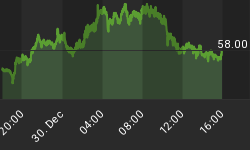I am shortening the length of, and will be decreasing the frequency of, updates on the Timing plan.
The previous updates contained charts and commentary that were ancillary to the system itself. While there are several indicators and techniques that can be used in more active market-timing, there is no point in discussing them here. The purpose of the Timing plan is to demonstrate an exceptionally simple and "lazy" method for reducing risk and timing the U.S. stock market.
I use the word "lazy" to describe the system because it has no designated rebalance intervals and is designed to make portfolio moves only when the market situation changes. This does not happen often, and that is a desired feature of the system's design. In the future, updates to Timing will take place either every fourth weekend, or when the market changes mandate an allocation change. Those updates will include an evaluation of returns on the plan.
Timing attempts to provide market equivalent returns over the long term, with a substantial reduction in variability of returns. The two components of the Timing program are EZ+Macro and Fear/Greed. This system trades rarely and splits its allocations between ETFs tracking the S&P 500, the intermediate-term U.S. Treasuries, and cash.
Information is as of the close on November 30, 2007.
EZ+Macro
My charts are relatively wide, and this site is best viewed at 1280×1024. If the chart is truncated in your browser, click on it to view it in full size.

EZ Trend is up, therefore the EZ+Macro portion of Timing is long stocks.

Macro Trend is bullish for Treasuries. This would come into play only if the EZ Trend was not up.
Fear/Greed

The Fear/Greed model signaled a buy for the U.S. stock market in early November. It would signal a sell only if $VIX relative to actual volatility fell to a historically low level. This is a tough model to follow, as it demands a buy and hold when fear is high and most people would like to sell. Currently the levels of Fear/Greed are about mid-range. Don't be fooled by the scale of the chart, 80% of the readings since 1990 have been between the red and green lines.
Model Allocation
Based on beginning with a $100,000 portfolio at inception.
S&P 500 SPDRs (SPY) – 99.9%
iShares 7-10 Year Treasury Bond Fund (IEF) – 0.0%
Cash – 0.1%
Returns
Based on beginning with a $100,000 portfolio at inception.
Equity: $102,363.60
Gain, Past 3 Weeks: +2.36%
Gain, Since Inception: +2.36%
Tracking
There are no changes to the allocation from the last message.
I have added back-testing information about the Timing plan to its Description page.
















